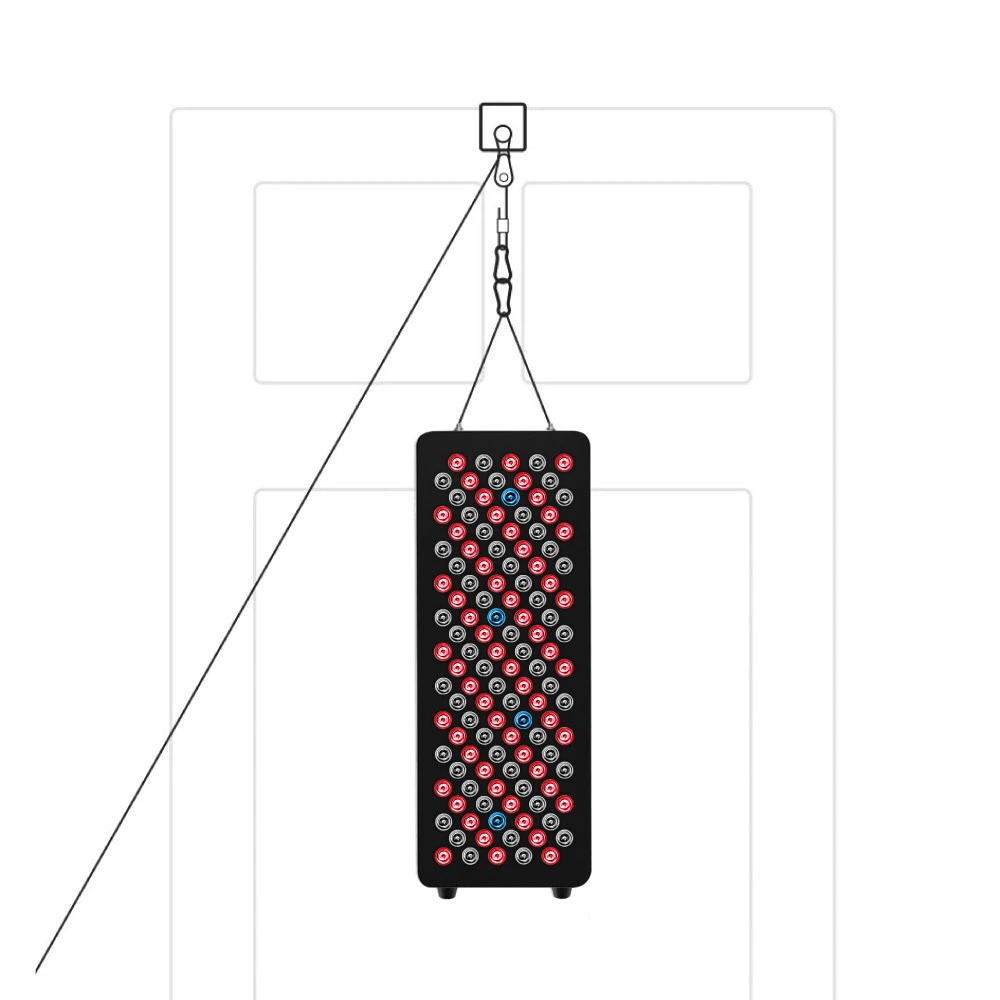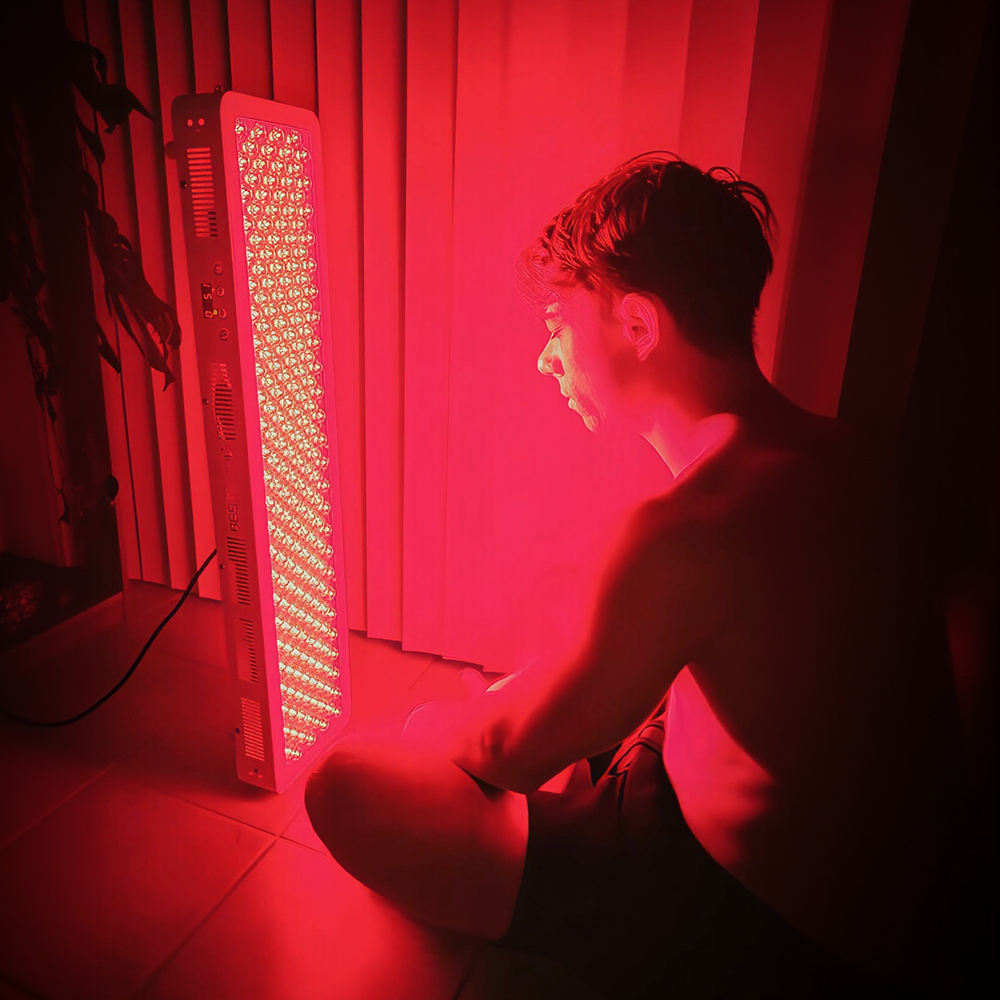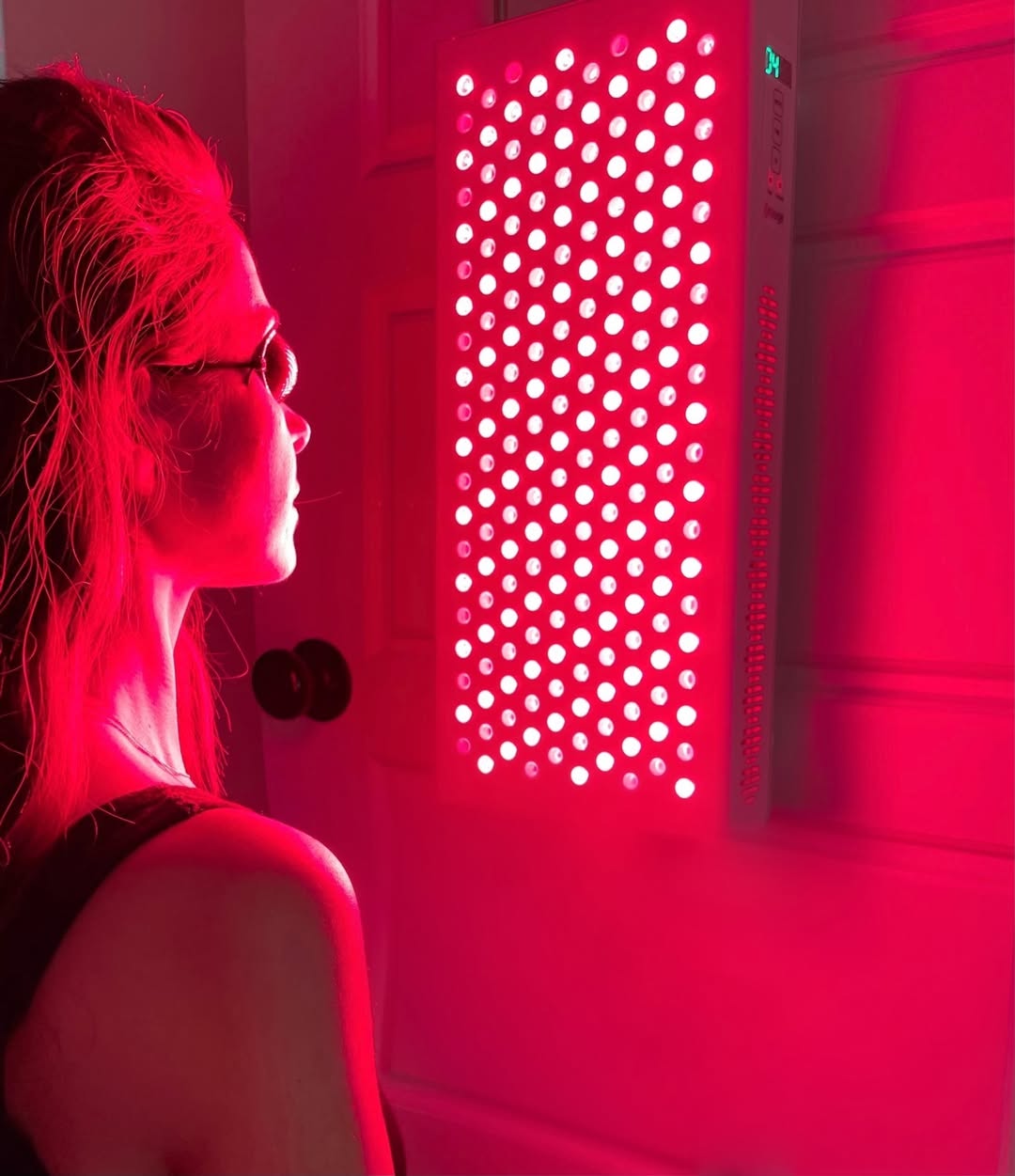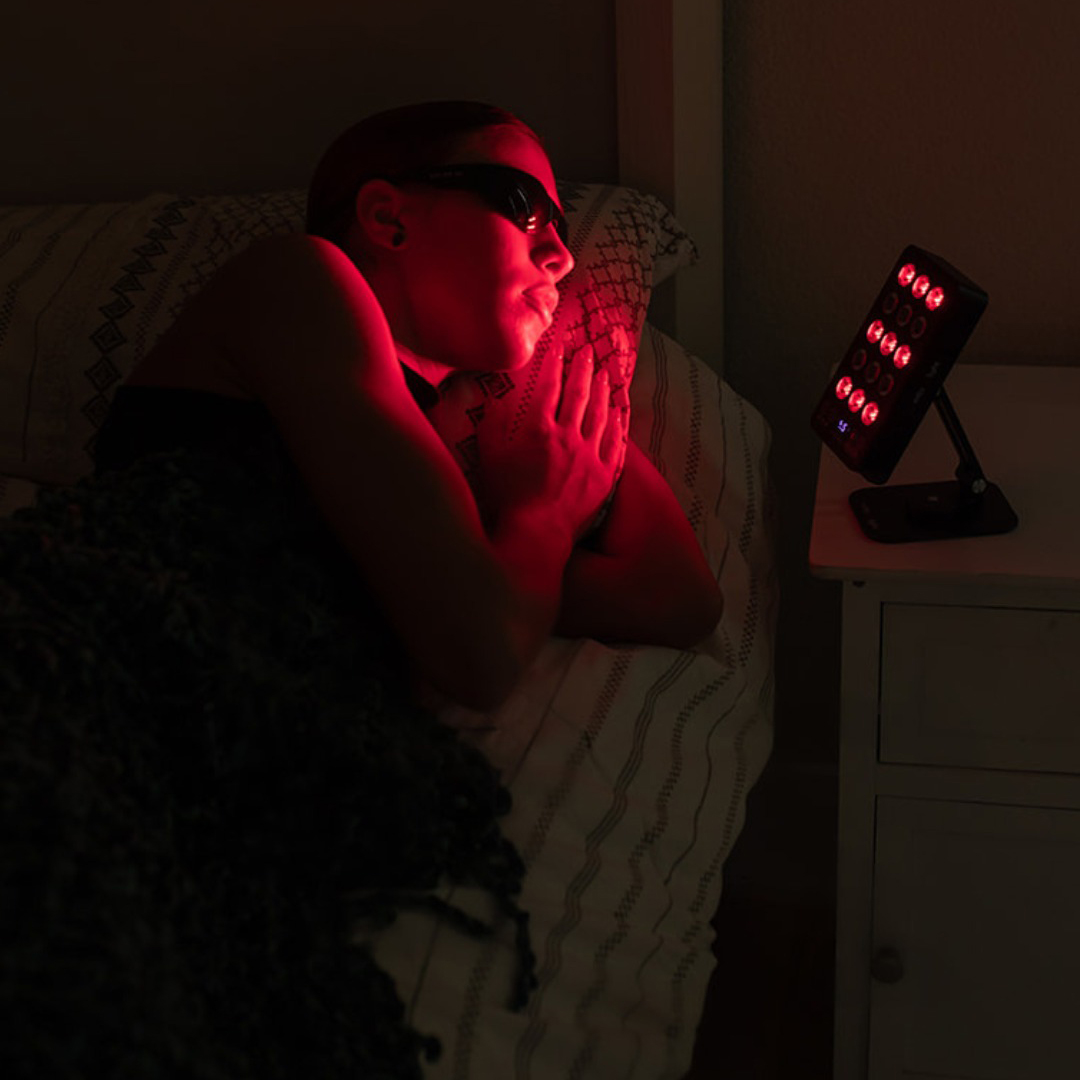![]() Free Shipping
Free Shipping ![]() Buy Now, Pay Later
Buy Now, Pay Later ![]() Eligible
Eligible
Red Light Therapy for Shingles: A Soothing Path to Pain Relief and Healing
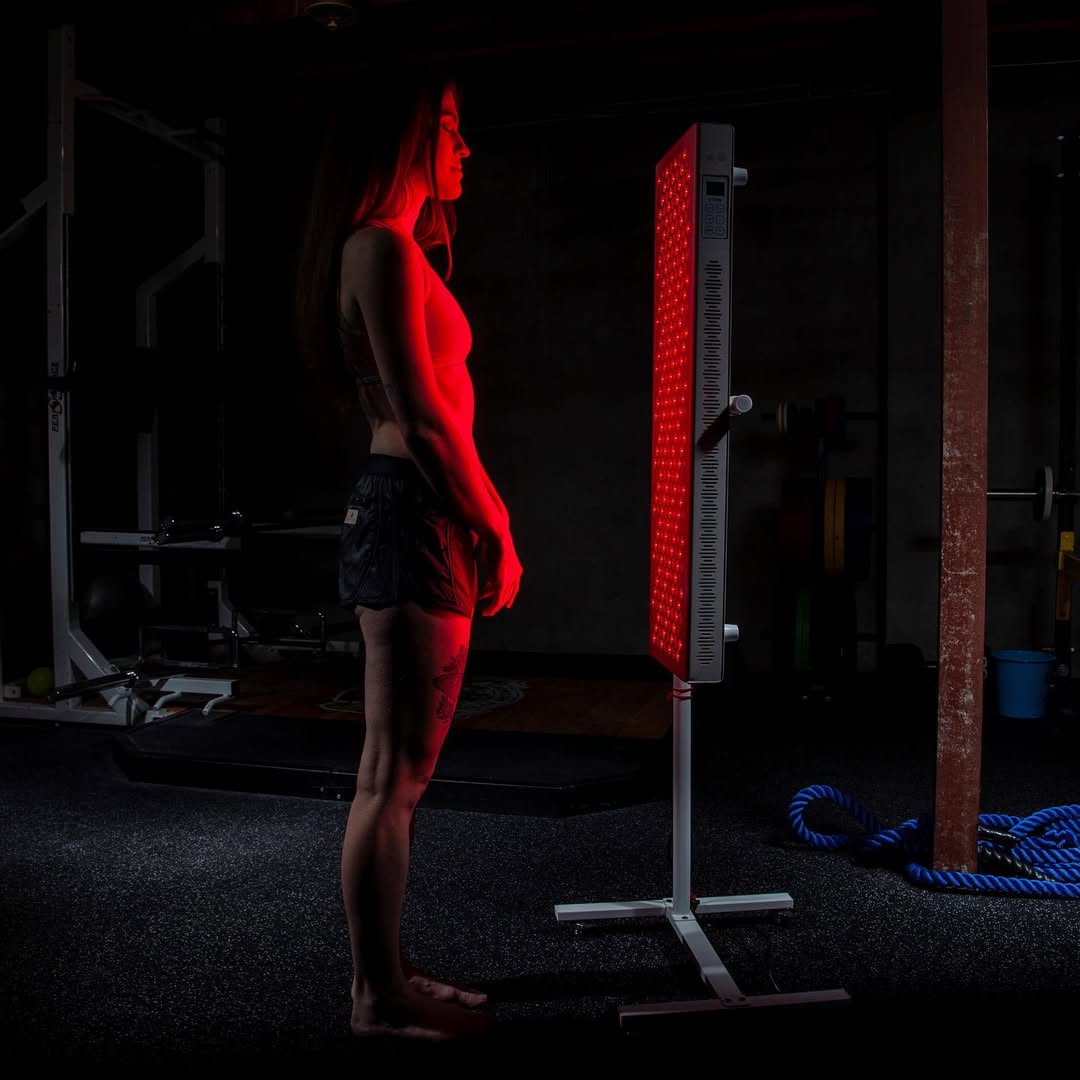
Shingles, also known as herpes zoster, is a painful viral infection caused by the reactivation of the varicella-zoster virus—the same virus that causes chickenpox. Characterized by a blistering rash and often debilitating nerve pain, finding effective relief is a top priority for sufferers. While antiviral medications are the standard treatment, many are turning to complementary therapies like red light therapy (RLT) to manage symptoms and promote healing.
This article delves into the science and application of red light therapy for shingles, examining its potential to ease pain, heal skin lesions, and improve quality of life during and after an outbreak.
What is Red Light Therapy? Understanding the Mechanism
Red Light Therapy (RLT), also known as photobiomodulation (PBM) or low-level laser therapy (LLLT), is a non-invasive treatment that uses specific wavelengths of red and near-infrared (NIR) light. Unlike UV light, which can damage the skin, this therapeutic light penetrates the skin safely to stimulate cellular energy production.
The primary mechanism occurs within the mitochondria—the “powerhouse” of the cell. Light energy is absorbed by a photoreceptor called cytochrome c oxidase, leading to:
- Increased production of adenosine triphosphate (ATP), the body’s cellular fuel.
- Reduced oxidative stress and inflammation.
- Enhanced blood circulation.
This boost in cellular function triggers a cascade of healing and regenerative processes throughout the body’s tissues.
The Shingles Challenge: Pain, Rash, and Postherpetic Neuralgia
A shingles outbreak presents a two-fold challenge:
- The Acute Phase: The initial appearance of a painful, blistering rash that typically follows a nerve pathway (dermatome) on one side of the body.
- The Chronic Phase: The potential development of Postherpetic Neuralgia (PHN), a condition where severe nerve pain persists for months or even years after the rash has cleared.
Conventional treatment focuses on antiviral drugs to shorten the outbreak and pain medications to manage discomfort. However, these don’t always address the underlying nerve damage and inflammation completely.
How Can Red Light Therapy Help with Shingles?
By targeting the core issues of inflammation, tissue damage, and nerve dysfunction, red light therapy offers a multi-pronged approach to shingles management.
1. Accelerated Rash and Skin Healing
The anti-inflammatory and bio-stimulative effects of RLT can significantly speed up the healing of shingles lesions. By enhancing fibroblast production (cells that make collagen) and improving local blood flow, RLT helps the skin repair itself more efficiently, reducing scabbing and the risk of scarring.
2. Reduction of Inflammation and Pain
RLT is a powerful anti-inflammatory modality. It helps calm the immune response in the affected area, reducing the swelling, redness, and heat associated with the shingles rash. This direct reduction in inflammation leads to immediate pain relief.
3. Addressing Nerve Pain and Postherpetic Neuralgia (PHN)
This is perhaps the most promising application for shingles sufferers. Studies on photobiomodulation have shown its ability to support nerve regeneration and modulate pain signals.
- Dr. Michael Hamblin, a leading Harvard photomedicine researcher, has stated, “Low-level light therapy can reduce neuroinflammation and promote nerve repair. It’s a promising area for treating neuropathic pain conditions.”
- By reducing inflammation around the damaged nerves and stimulating cellular repair, RLT can help alleviate the burning, shooting, and tingling pain of PHN.
The Evidence: What Does the Research Say?
While large-scale, shingles-specific clinical trials are still growing, the foundational science and related clinical evidence are strong.
- A 2017 review in the journal Pain Research and Management concluded that PBM is an effective treatment for neuropathic pain, improving function and reducing pain intensity.
- Research on other forms of nerve pain and skin healing consistently shows that RLT can reduce inflammation, promote tissue repair, and alleviate pain.
The therapeutic effects are well-grounded in established biological principles, making it a logical and low-risk adjunct therapy for shingles.
Using Red Light Therapy for Shingles: A Practical Guide
If you’re considering RLT for shingles, here are key factors to consider.
VELLGUS Elite V2
THE #1 RATED RED LIGHT DEVICE
VELLGUS pro V2
THE #1 RATED FULL BODY RED LIGHT DEVICE
Wavelengths and Device Types
For shingles, you want a device that can address both surface-level skin healing and deeper nerve pain.
- Red Light (630-660 nm): Excellent for skin healing, collagen production, and reducing surface inflammation.
- Near-Infrared Light (810-850 nm): Penetrates deeper into tissues, making it ideal for reaching damaged nerves and alleviating PHN.
Many high-quality home devices and professional panels offer a combination of these wavelengths.
Treatment Protocol Example
Consistency is key. A general protocol might look like this:
| Phase | Frequency | Session Duration | Distance from Skin | Key Goal |
|---|---|---|---|---|
| Acute (Rash Present) | 1-2 times per day | 5-10 minutes per area | 6-12 inches | Reduce pain, accelerate rash healing |
| Chronic (PHN Management) | 3-5 times per week | 10-15 minutes per area | 6-12 inches | Modulate nerve pain, support repair |
Disclaimer: Always consult with your healthcare provider before starting any new treatment to ensure it is appropriate for your specific condition.
Safety and Professional Considerations
Red light therapy is considered very safe with minimal side effects. It is non-thermal (doesn’t heat the skin), non-invasive, and non-ionizing.
Crucial Consideration: Always consult your doctor or dermatologist before using RLT on an active shingles rash. They can confirm the diagnosis and ensure this therapy integrates safely with your other medications.
As Dr. Whitney Bowe, a board-certified dermatologist, often emphasizes regarding new treatments: “It’s essential to have an open dialogue with your dermatologist. Combining in-office expertise with at-home technologies can often yield the best results, but it needs to be a supervised partnership.”
Conclusion: A Promising Adjunct for Comprehensive Shingles Care
Red light therapy presents a compelling, science-backed option for individuals battling the acute pain of a shingles outbreak and the lingering discomfort of postherpetic neuralgia. By harnessing the body’s innate healing processes at a cellular level, it can accelerate skin repair, reduce inflammation, and soothe damaged nerves.
While not a replacement for antiviral medications, it is a powerful complementary tool. When used under medical guidance, red light therapy can be a valuable part of a holistic strategy to navigate the challenges of shingles and reclaim a life with less pain.



